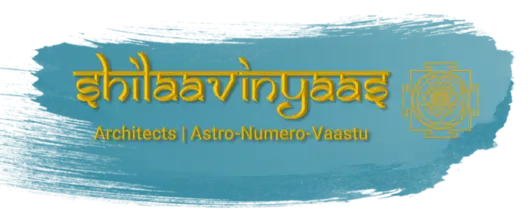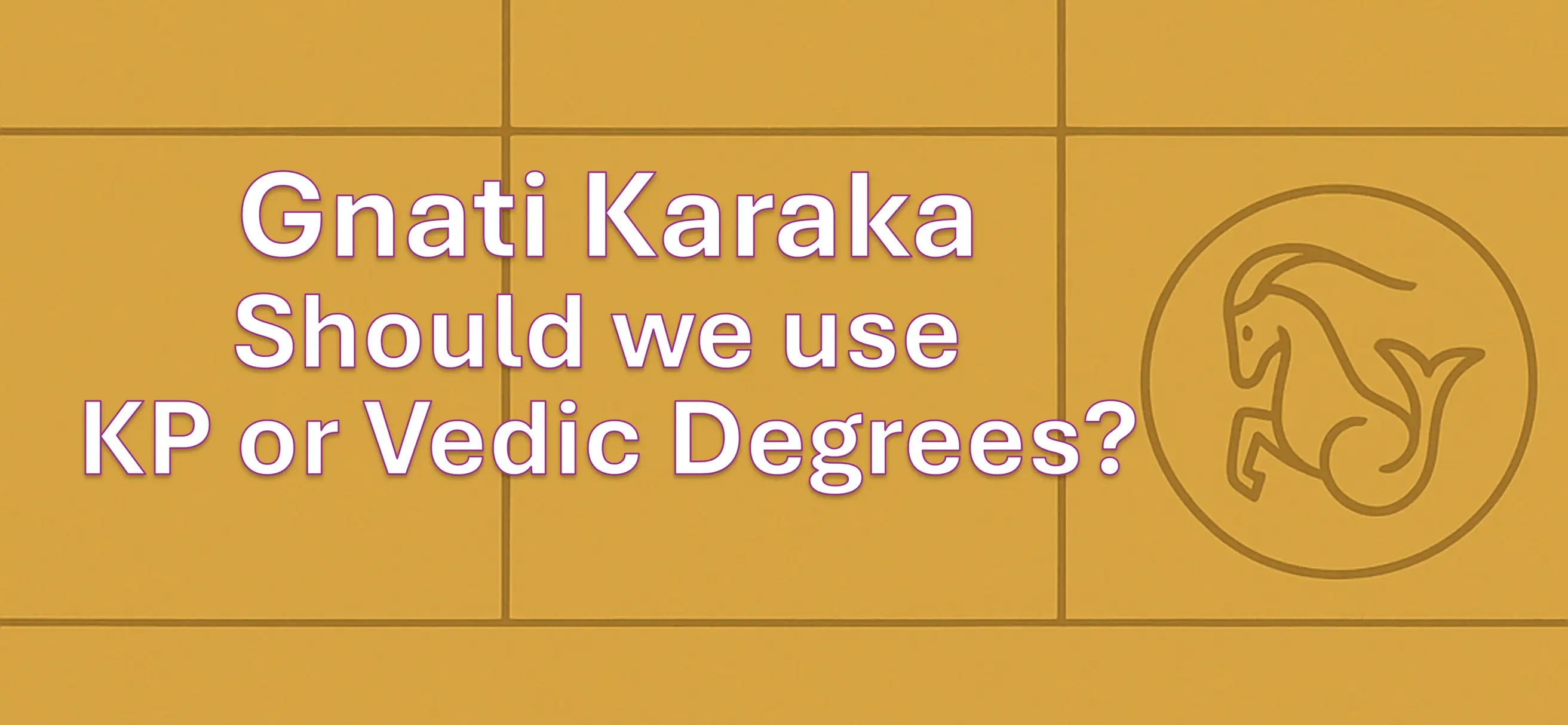📋 The New KP Ayanamsa Formula
KP Astrology is highly mathematical and event-timing oriented. One of its hallmarks is the use of a unique Ayanamsa to calculate precise planetary positions.
The New KP Ayanamsa (NKPA) Formula:
Given by Prof. K. Balachandran (KP Yearbook, 2003)
NKPA = B + [T * P + (T^2 * A)] / 3600Where:
B= Base Ayanamsa at 15 April 1900 = 22°22′30″ = 22.375 degreesT= Year - 1900 (e.g., 2000 => T = 100)P= 50.2388475 (Newcomb’s annual precession rate in arcseconds)A= 0.000111 (adjustment factor for increasing rate)
Purpose:
- Used at 5:30 AM IST on April 15 of every year
- Offers arc-second level precision for calculating planetary cusps and sub-lords
Comparison to Vedic Ayanamsa:
- Vedic astrology commonly uses Lahiri (Chitrapaksha) or others like Raman.
- KP uses its own formula for precision-based predictions.
- The difference can affect planetary degrees and therefore timing.
What is Gnati Karaka?
In Jaimini Astrology (a Vedic system), Gnati Karaka is one of the 7 Karakas (significators) based on planetary degrees. It represents:
- Enemies, obstacles, diseases, and karmic debts
- Also relatives who challenge or oppose, or issues from past life
It is determined by ordering the planets based on their true longitude (degree within sign).
⚖️ KP vs Vedic: Which Degrees to Use for Gnati Karaka?
Gnati Karaka is a concept from Jaimini Astrology that identifies the planet responsible for enemies, obstacles, or karmic debts. It is determined by ranking the 7 planets (Sun to Saturn) by sidereal degree.
✉️ Important: Always use Vedic sidereal degrees (Lahiri or other chosen Ayanamsa) — NOT KP degrees — for calculating Gnati Karaka.
Why?
- Gnati Karaka belongs to the Vedic system, which is sidereal.
- KP degrees are adjusted for event-timing and not suited for Jaimini karaka logic.
1. Understand the System Origin
| Parameter | Vedic/Jaimini (Traditional) | KP (Krishnamurti Paddhati) |
|---|---|---|
| Gnati Karaka | Part of 7 Karaka system from Jaimini Astrology | Not used in KP astrology |
| Purpose | Identifies karmic blocks, enemies, diseases | KP focuses on timing, sub-lords, ruling planets |
| Planetary Ranking | Based on sidereal degrees in D1 chart | KP degrees are refined via custom Ayanamsa |
Correct Approach:
Use sidereal degrees with a Vedic Ayanamsa like:
- Lahiri (Chitrapaksha) – most commonly used
- Raman, Yukteshwar, or your preferred sidereal system
Then, order the 7 planets (Sun to Saturn) by absolute degrees, and assign Karakas:
| Degree Order | Karaka |
|---|---|
| Highest | Atma Karaka |
| 2nd Highest | Amatya Karaka |
| 3rd Highest | Bhratru Karaka |
| 4th Highest | Matru Karaka |
| 5th Highest | Putra Karaka |
| 6th Highest | Gnati Karaka |
| 7th Highest | Dara Karaka |
Note: Rahu/Ketu not included in traditional 7 Karaka system.
💡 If you use KP Ayanamsa:
- The degrees will differ slightly, and it will misclassify Karakas compared to traditional methods.
- So it’s not recommended.
🔍 Conclusion: Gnati Karaka is not a KP concept, hence it should not be mixed with KP degree systems.
2. Compare Ayanamsa Approaches
| Feature | Vedic (Lahiri/Chitrapaksha) | KP (New KP Ayanamsa Formula) |
|---|---|---|
| Ayanamsa Base | ~23.85° (varies yearly) | Starts from 22.375° at 15-Apr-1900 |
| Calculation Type | Tabulated or Lahiri-based | Formula: NKPA = B + (T * P + T² * A)/3600 |
| Application | Birth chart, divisional charts | Cusps, sub-lords, ruling planets |
| Suitability for Karaka | Yes – Jaimini-based degree system | No – Adjusted for predictive accuracy |
3. Use Case: Finding Gnati Karaka
To compute Gnati Karaka:
- Use only Sun to Saturn (7 planets).
- Get their absolute sidereal longitudes using a Vedic Ayanamsa (e.g., Lahiri).
- Rank planets by highest degree.
- The 6th highest becomes Gnati Karaka.
You must use Vedic degrees, not KP degrees, even if the rest of your system (like timing) uses KP methods.
Why This Matters:
Mixing systems (e.g., using KP degrees for a Vedic concept) can lead to incorrect karaka assignment, and ultimately misinterpretation of karmic lessons. Honor the philosophical system that originated the concept.
Leave a comment
Your email address will not be published. Email is optional. Required fields are marked *




